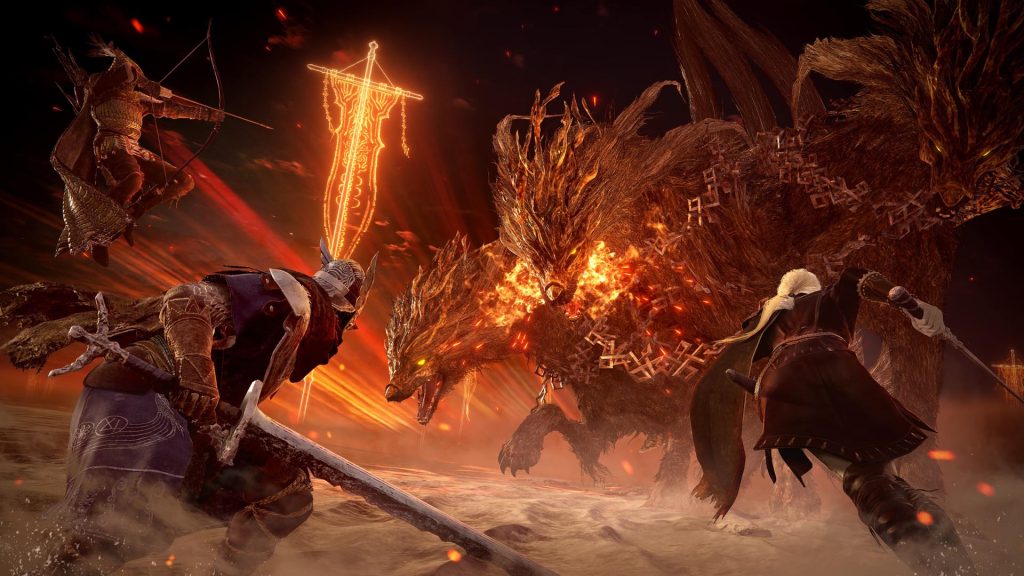With the arrival of Elden Ring Nightreign, FromSoftware fans are once again thrust into a realm shrouded in darkness and peril. Known for their punishing mechanics and intricate worlds, the developers have woven together familiar elements from their past titles while introducing an entirely new multiplayer-focused gameplay experience. This game promises to challenge seasoned players and newcomers alike in a fresh and exhilarating way.
Game Mechanics and Core Gameplay
Elden Ring Nightreign takes a unique approach by focusing on cooperative gameplay where three players venture into the haunted lands of Limveld. Their mission? To survive two ominous in-game nights while gathering resources and leveling up in order to confront the formidable Night Lord on the third night. This formula not only encapsulates the heart of classic FromSoftware gameplay but also introduces new elements that engage players in ways they have not experienced before.
One of the standout features is the addition of new movement mechanics, including wall-jumping and sprinting, which effectively enhance fluidity in navigation and combat. Players can also explore the Roundtable Hold, a hub area from the original Elden Ring, where they can practice combat against dummies and refine their strategies. This zone is crucial for acclimatizing players to the game’s additional mechanics, such as Character Skills and Ultimate Arts, which set Nightreign apart from its predecessors.
Character Selection and Strategy
Players begin by choosing from a diverse roster of characters, each with distinct abilities tailored to specific gameplay styles. The initial six options include:
- Ironeye: A ranged fighter equipped with archery skills.
- Guardian: A heavy defensive class designed to absorb damage.
- Raider: A fierce melee combatant excelling in close quarters.
- Executor: A high-dexterity fighter with swift attacks.
- Recluse: An elemental sorceress wielding magical powers.
- Wylder: An adaptable class that balances offense and defense.
Choosing a character that complements your teammates is vital to forming an effective strategy. Many players have found success by combining melee characters with a ranged support, allowing for coordinated attacks and revivals. This aspect of teamwork is emphasized throughout gameplay and can often determine the course of encounters.
Map Navigation and Planning
As players leap into Limveld, an often chaotic environment filled with dangers, taking a moment to assess the map can be a game-changer. It’s advised to seek out chapels for Flask upgrades and engage with nearby mini-bosses early on, as these interactions can offer crucial advantages in the form of experience and valuable loot. The game’s pin system further enhances navigation, allowing players to mark important locations that all teammates can see. Knowing when to retreat in the face of overwhelming odds is also critical, emphasizing the lesson that sometimes survival outweighs pride.
The Importance of Gear and Inventory Management
In most RPGs, players are conditioned to chase after the highest number gear available. However, in Nightreign, it’s strategic to consider the passive bonuses some lower-stat weapons provide. Each piece of gear can offer unique enhancements that may better suit your overall build, giving players a reason to inspect their inventory closely. As the developers have noted in a recent interview, “The nuances of gear in Nightreign encourage players to think critically about their loadouts rather than simply opt for the strongest weapon” [Game Informer].
Communication and Teamwork
Given the cooperative nature of Nightreign, effective communication is paramount. Players are encouraged to strategize in real-time, sharing insights about enemy movements and potential loot. The game also offers non-verbal tools (like pinging items), but nothing beats direct dialogue among teammates. Planning attack sequences or character synergies can be the difference between a tranquil adventure and a faceplant against a rampaging enemy.
Learning Through Challenge
Players should brace themselves for adversity; dying is an integral part of the learning curve in Nightreign. Each defeat serves as a stepping stone toward improvement, granting Relics that boost your character’s capabilities for future runs. As the developers mentioned during a recent livestream, “Embracing failure is as important as celebrating victories in our games” [Twitch]. This design philosophy not only adds depth to the experience but also encourages players to evolve and adapt with each playthrough.
Conclusion
With the launch of Elden Ring Nightreign, players are once again immersed in a dark, intricate world filled with both challenge and cooperation. The blend of familiar mechanics and new gameplay features offers a compelling reason for players to gather their friends and explore the terrors that await in Limveld. Remember, teamwork and strategy will be your greatest allies as you prepare to face the lurking threats of the night.
Quick Reference Table
| Feature | Description |
|---|---|
| Character Classes | Ranged, melee, defensive, and magical options. |
| Multiplayer Focus | Team of three players working together. |
| Gear Mechanics | Weapons offer passive bonuses, not just raw stats. |
| Map System | Utilize pins to guide teammates to key locations. |
| Learning Curve | Emphasis on learning from failures and improving. |

